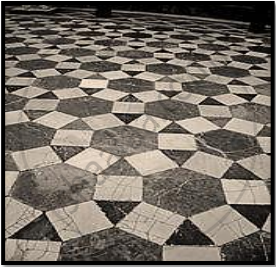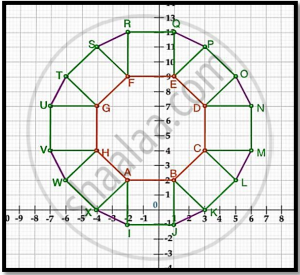Advertisements
Advertisements
प्रश्न
Mark the correct alternative in each of the following:
The point of intersect of the coordinate axes is
पर्याय
ordinate
abscissa
quadrant
origin
उत्तर
As we know that:
The distance of a point from y−axis is called its x−coordinate or abscissa.
The distance of a point from x−axis is called its y−coordinate or ordinate.
The coordinate axes divide the plane into four equal parts which are known as quadrants.
The point of intersection of the coordinate axes is called the origin and the coordinates of origin are (0,0).
Example is shown in the graph

APPEARS IN
संबंधित प्रश्न
In the seating arrangement of desks in a classroom three students Rohini, Sandhya and Bina are seated at A(3, 1), B(6, 4), and C(8, 6). Do you think they are seated in a line?
If p(x , y) is point equidistant from the points A(6, -1) and B(2,3) A , show that x – y = 3
Find the co-ordinates of the point equidistant from three given points A(5,3), B(5, -5) and C(1,- 5).
If the point C(k,4) divides the join of A(2,6) and B(5,1) in the ratio 2:3 then find the value of k.
Find the centroid of ΔABC whose vertices are A(2,2) , B (-4,-4) and C (5,-8).
If points (a, 0), (0, b) and (1, 1) are collinear, then \[\frac{1}{a} + \frac{1}{b} =\]
Find the point on the y-axis which is equidistant from the points (S, - 2) and (- 3, 2).
The perpendicular distance of the point P(3, 4) from the y-axis is ______.
In which ratio the y-axis divides the line segment joining the points (5, – 6) and (–1, – 4)?
A tiling or tessellation of a flat surface is the covering of a plane using one or more geometric shapes, called tiles, with no overlaps and no gaps. Historically, tessellations were used in ancient Rome and in Islamic art. You may find tessellation patterns on floors, walls, paintings etc. Shown below is a tiled floor in the archaeological Museum of Seville, made using squares, triangles and hexagons.

A craftsman thought of making a floor pattern after being inspired by the above design. To ensure accuracy in his work, he made the pattern on the Cartesian plane. He used regular octagons, squares and triangles for his floor tessellation pattern

Use the above figure to answer the questions that follow:
- What is the length of the line segment joining points B and F?
- The centre ‘Z’ of the figure will be the point of intersection of the diagonals of quadrilateral WXOP. Then what are the coordinates of Z?
- What are the coordinates of the point on y-axis equidistant from A and G?
OR
What is the area of Trapezium AFGH?
